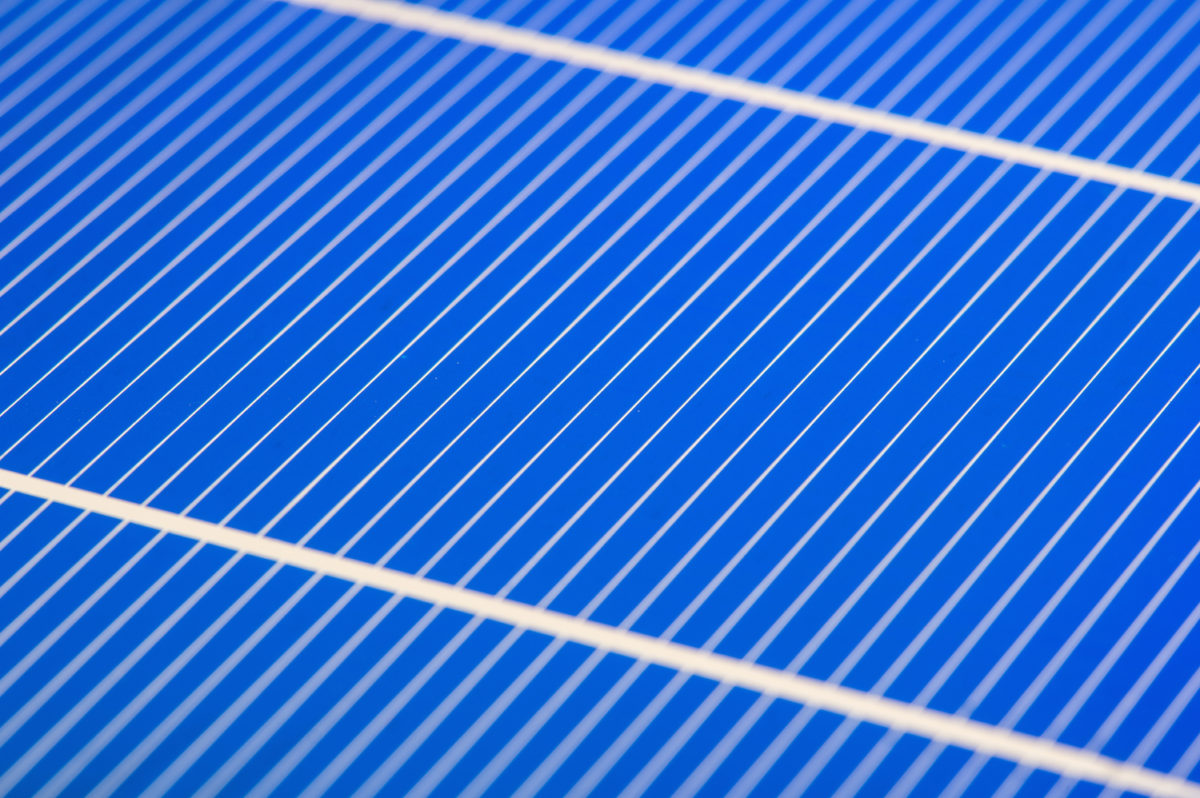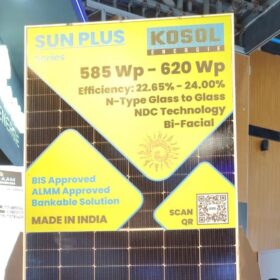From pv magazine Global
While passivated emitter rear contact (PERC) technology, and its associated higher efficiencies, is becoming increasingly mainstream, experts in R&D labs continue to work on other technologies, which can further drive efficiencies up and costs down.
One promising technology is what experts in Asia often call TOPCon. To avoid misunderstanding: In Europe, the abbreviation, which stands for “Tunnel Oxide Passivated Contact”, is more associated with Fraunhofer ISE’s development – a particular variant of the trend.
For the concept, in order to reduce recombination losses from the metal contacts and the silicon surface of cells, a thin oxide layer is introduced, in addition to heavily doped polycrystalline silicon between metal contacts and wafer.
The carriers, i.e. electrons and wholes, can tunnel through, due to a quantum-physical phenomena. This establishes the contact, while the wafer is better passivated, and recombination losses are significantly reduced compared to standard technology.
The efficiency of a cell is always related to the balance of establishing a good contact with low contact resistance, and avoiding recombination losses, which occur on all metal contacted areas.
In standard contacts, which consist of pure metallization on the wafer, losses are high. Selective emitter technologies already reduce these losses for front contacts by increasing the doping selectively under the metal.
TOPCon is the next step: As an extra gift, the oxide layer passivates the whole silicon wafer surface simultaneously, if it is fully coated.
“The main equipment to form TOPCon structures already exists,” said Guangyao Jin, chief scientist at DuPont Photovoltaic Solutions, based in Shanghai. Indeed, low pressure chemical vapor deposition (LPCVD), plasma enhanced chemical vapor deposition (PECVD), or even atmosphere pressure chemical vapor deposition (APCVD), could all be utilized.
The cell efficiency entitlement TOPCon promises particularly depends on the metallization paste, which will determine whether or not the technology can be transferred into cost effective mass production, said Jin. “Today, metallization is the bottleneck,” he said.
Jin and his team are working with cell makers to help the technology succeed, and provide the necessary metallization solutions.
The requirements for the metallization are quite different to those for standard contacts. While for standard contacts in the firing process, the metal should penetrate through the passivation layer and touch the silicon wafer, with TOPCon, it must stay above the oxide layer.
For n-type cells, this already works well. Jin estimates that next year, more than 1.5 GW of n-type production capacity will be upgraded to TOPCon in China.
For n-type cells using TOPCon technology, efficiencies of over 23% have already been reached, he said, although the average efficiency is still slightly lower. “Now the task is to increase the average efficiency with compatible yield rates compared to PERC mono,” he continued.
For p-PERC mono technology, which currently holds an around 30% market share, it is still debatable whether and when TOPCon will be introduced at a larger scale.
Here it seems more difficult to provide concrete numbers for the efficiency entitlement in mass production. “The entitlement when adopting TOPCon to p-type is supposed to be a bit lower than in n-type,” said Jin. However, in the tenders associated with the Chinese Top Runner program, one winner has applied with p-type TOPCon technology. The installation is expected to be realized in 2019.
In the end, the costs associated with any efficiency gains will determine whether or not the technology will be adopted. For instance, mono PERC has lower production costs per watt than standard multi, according to the latest Bloomberg report. As such, it is no wonder that the demand to upgrade production lines is currently high.
Selective emitter technology is also coming. Jin estimates that by the end of next year, around 20 GW of PERC mono cell production capacity will already have been upgraded.
Whether TOPCon comes or not, “there have never been so many options for cell developers,” said Jin. For example, heterojunction can compete with TOPCon, although it has the disadvantage that it cannot tolerate the high temperatures used in existing conventional metallization solutions.
Technology for the new passivation method was also developed by Centrotherm in collaboration with German research institute, ISFH. They use the term POLO (Poly-Si-on-Oxide).
The German equipment manufacturer said at Energy Taiwan 2018 that it is back with a technology for PERC upgrade – a business long dominated by Switzerland-based Meyer Burger.
By Michael Fuhs
This content is protected by copyright and may not be reused. If you want to cooperate with us and would like to reuse some of our content, please contact: editors@pv-magazine.com.








By submitting this form you agree to pv magazine using your data for the purposes of publishing your comment.
Your personal data will only be disclosed or otherwise transmitted to third parties for the purposes of spam filtering or if this is necessary for technical maintenance of the website. Any other transfer to third parties will not take place unless this is justified on the basis of applicable data protection regulations or if pv magazine is legally obliged to do so.
You may revoke this consent at any time with effect for the future, in which case your personal data will be deleted immediately. Otherwise, your data will be deleted if pv magazine has processed your request or the purpose of data storage is fulfilled.
Further information on data privacy can be found in our Data Protection Policy.